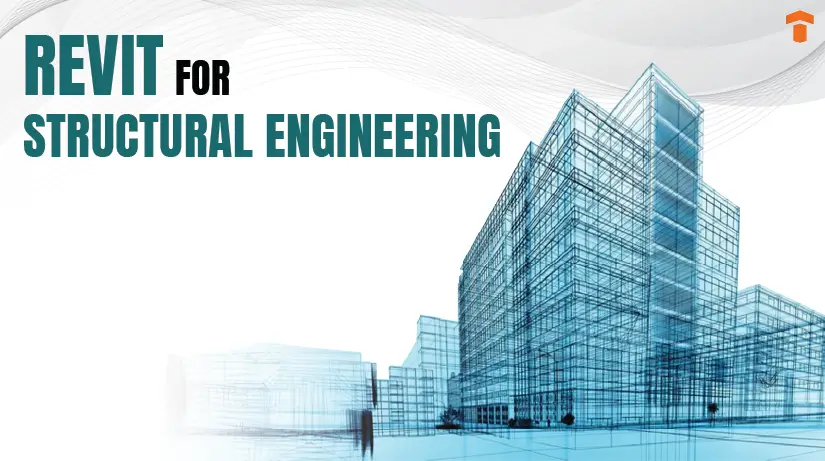Revit for Structural Engineering
Apr 03, 2024
Category: BIM / Digitization / Automation
Admin

Autodesk Revit, which includes more than fifty building information modeling (BIM) applications and tools, is among the most used and well-liked programs among people working in the AEC industry. A lot is said by its market domination.
Most of the work done by experts in the AEC business, whether employees or freelancers, is done in Revit. As its name implies, Revit is a tool that structural engineers can use to make immediate changes.
What is Revit Structure?
The widely used Building Information Modeling (BIM) program Revit, developed by Autodesk, has replaced traditional, two-dimensional approaches with cutting-edge, three-dimensional tools. Revit structure for structural engineers brings exciting new capabilities and improvements with each new version, further streamlining the design and construction processes.
There are a lot of problems in the AEC business, such as work not being properly coordinated, bad company culture, misunderstandings, and inadequate visualization.
New features in Revit, such as site modeling, Revit structure rebar analysis, etc., will help modern structural engineers work better with other disciplines and improve collaboration with architects, MEP engineers, project managers, and others.
Use of Revit Structure in Making the Construction Process Better
Everyone likes a 3D model. However, 3D models are extremely useful for structural engineering and building procedures beyond improved visualization and photographs. Data-rich 3D modeling can enhance on-site efficiency and functionality.
When comparing 3D models to actual construction sites, the disparity between the two sets of specs and dimensions keeps growing. Revit structure for structural engineers will bridge this gap by enhancing workflow and collaboration and providing surveyors and project managers with access to detailed dimensions, connector kinds, joint types, and more.
Applications such as data-rich 3D modeling, readymade construction models, bespoke fabrication templates, fast data extraction, transfer of Revit structural analysis results, and early clash detection detection help stakeholders collaborate better.
Advantages of using Revit Structure for Structural Engineering
1. Improved Collaboration
Using Revit structure, everyone from architects to engineers to contractors can work together in real-time. As a result, design problems can be resolved more quickly and accurately, improving the overall design process.
2. Increased Accuracy
With Revit’s Building Information Modeling (BIM) capabilities, precise 3D models are possible. Errors and redos during construction are less likely due to more precise construction papers.
3. Increased Productivity
Structural engineers may become more productive with the help of Revit’s many automation features and built-in processes.
4. Improved Visualization
Revit’s intuitive and feature-rich user interface readily allows users to examine and visualize the structure in 3D. This facilitates better coordination and communication among all parties involved and makes it simpler to spot problems before the building starts.
5. Increased Flexibility
Because Revit structure makes it simple to alter and update design information, engineers may more easily make necessary adjustments to the design and react to changes in project needs.
Conclusion
Improved functionality, efficiency, less time spent on manual activities, and the ability to prevent delays are just a few of Revit’s many advantages. It’s about time structural engineers stopped wasting time on paperwork and other repetitive operations that Revit structure can automate and started focusing on building safety and thorough analysis.
About TechnoStruct Academy:
TechnoStruct Academy is the educational arm of TechnoStruct, LLC, a registered design engineering firm based in California. It offers specialized BIM training programs for architecture, MEP, and BIM Management.
Our BIM Certification Courses:
BIM-Ready+: Become a BIM Management professional specialized in managing all ASMEPF projects working with open BIM and interoperability with a credible BIM Manager Certification.
BIM-Ready Complete: Become a BIM Engineer specialized in all ASMEPF (Architectural, Structural, Mechanical, Electrical, Plumbing, and Fire Protection) disciplines working with open BIM and interoperability.
BIM-Ready (Arch+Structure): Specialize in BIM Fundamentals, Conceptual Design, Sustainable Design, Design Development, and Construction Documentation in the BIM Environment with this BIM Architect Course.
BIM-Ready (MEP): Become an MEP BIM Engineer specializing in BIM Fundamentals, HVAC, Electrical, Plumbing and Fire Fighting, Design, and Modeling in a BIM Environment.
Bexel Manager Certification Program: This program teaches you about BEXEL Manager, a software that brings together key 3D, 4D, 5D, and BIM features, making it quick and easy to embrace BIM processes and technology for speedy project implementation.
FAQ
1) Is Revit good for structural engineers?
Structural engineering is an area that uses Revit. Beams, columns, and walls can all be precisely modeled with their included tools. Engineers can use these models to assess a building’s structural performance and check if it complies with safety regulations.
2) Can Revit do structural detailing?
Many CAD services use various CAD programs, such as Revit, AutoCAD, Tekla, Navisworks, etc. Revit, however, stands head and shoulders above the competition among modern CAD programs for structural steel detailing services, thanks to its many useful features.
3) Why do structural engineers use Revit?
Revit allows structural engineers to easily incorporate reinforcement models into project sheets, bridging the gap between 2D and 3D views. The software’s intelligent 3D reinforcement makes it possible to incorporate precast or cast-in-place concrete components into the model as needed.








